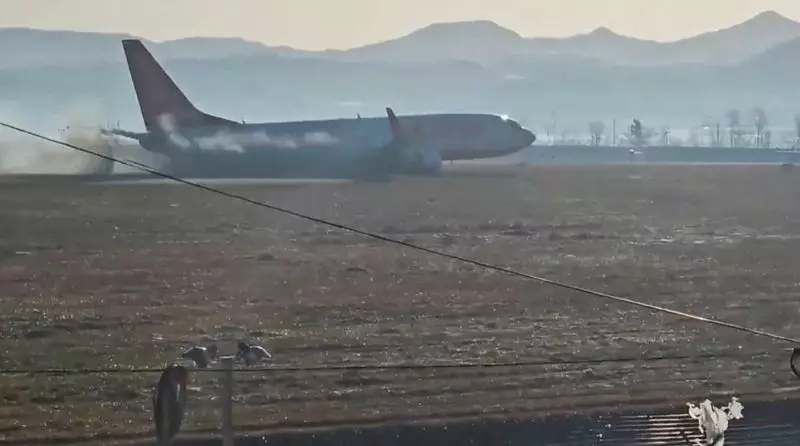The crash of Jeju Air flight 7C2216 at Muan International Airport has become one of the most harrowing events in South Korea’s aviation history. With 179 out of 181 passengers tragically losing their lives, the incident has left many questions unanswered. Aviation experts are scrutinizing various elements of the incident, including possible mechanical failures and environmental factors. While authorities have hinted at a potential bird strike as a contributing factor, numerous inconsistencies in the plane’s landing suggest a far more complex problem.
Authorities have indicated that a bird strike was a possibility in the crash. However, experts are divided on whether this theory fully accounts for the disaster. Gregory Alegi, a seasoned aviation analyst, has raised critical questions regarding the flight’s excessive speed and the deployed landing systems. As he articulates, “Why was the plane going so fast? Why were the flaps not open? Why was the landing gear not down?” Such inquiries highlight that avian encounters, while not uncommon, rarely result in the catastrophic failure seen in this case.
Although a bird strike could have theoretically interfered with engine performance, stranding the aircraft without full functionality, experts emphasize that emergency measures should have been in place to resolve such complications. “Bird strikes happen far more often, but typically they don’t cause the loss of an airplane by themselves,” explains Geoffrey Thomas, head of Airline News, underscoring that mechanical failures may also play a significant role.
A startling observation from footage of the landing depicts the aircraft moving down the runway without any landing gear deployed. Christian Beckert, a Lufthansa pilot, noted that “it’s really, really very rare… not to lower the gear,” indicating a serious anomaly that defies standard operational protocols. The absence of deployed landing gear raises important questions about the aircraft’s pre-landing checks, furthering speculation that factors beyond a mere bird strike could be involved.
If the gear was indeed functional at the point of impact, it would have required a chain of failures to prevent deployment, effectively barring safe landings and case justifications. Having all these systems institute a fall-back mechanism, the lack of operational landing gear suggests an unprecedented series of errors, both in terms of pilot judgment and mechanical failure.
Eyewitness accounts and reports outline a frenetic series of events leading up to the crash. The situation escalated rapidly: the control tower issued a bird strike warning, pilots declared a mayday, and moments later, an unplanned belly landing occurred. Marco Chan, an aviation operations lecturer, notes the last-minute change in landing direction likely exacerbated the pilots’ workload, creating a chaotic environment characterized by urgent decisions amidst limited information.
Given the intricacies of aviation safety protocols, both the crew’s haste and the ensuing response are worthy of further investigation. The 737-800 is heralded for its strong safety record, and the operational history of the crew reflects experience. However, this incident forces a re-evaluation of systemic areas that could contribute to severe accidents in otherwise routine flights.
Authorities are now faced with the challenging task of conducting a thorough investigation to comprehend the crash’s contributing elements. Under international aviation regulations, South Korea, with the assistance of the U.S. National Transportation Safety Board, will lead the inquiry. Investigating such events often reveals a combination of factors that manifest into disaster, a reality that experts are attempting to piece together.
The recovery of both the flight data recorder and the cockpit voice recorder is essential for understanding the incident’s particulars. As Trevor Jensen emphasizes, emergency services are typically prepared for belly landings, suggesting that the aircrew was likely unprepared for the emergency that unfolded.
The tragedy of Jeju Air flight 7C2216 serves as a poignant reminder of the challenges inherent in aviation safety. With many uncertainties still surrounding the crash, the aviation community remains vigilant in addressing procedural flaws and mechanical concerns. An aircraft often faces a confluence of factors that may culminate in disaster, and it is crucial for industry stakeholders to learn from such occurrences to enhance safety resilience in the future.
As investigations proceed, it is important for those impacted by this sorrowful incident, as well as aviation professionals worldwide, to pursue a clearer understanding of what went wrong—not merely to reflect on loss but to fuel progress in aviation safety measures and emergency preparedness for all in the skies.

